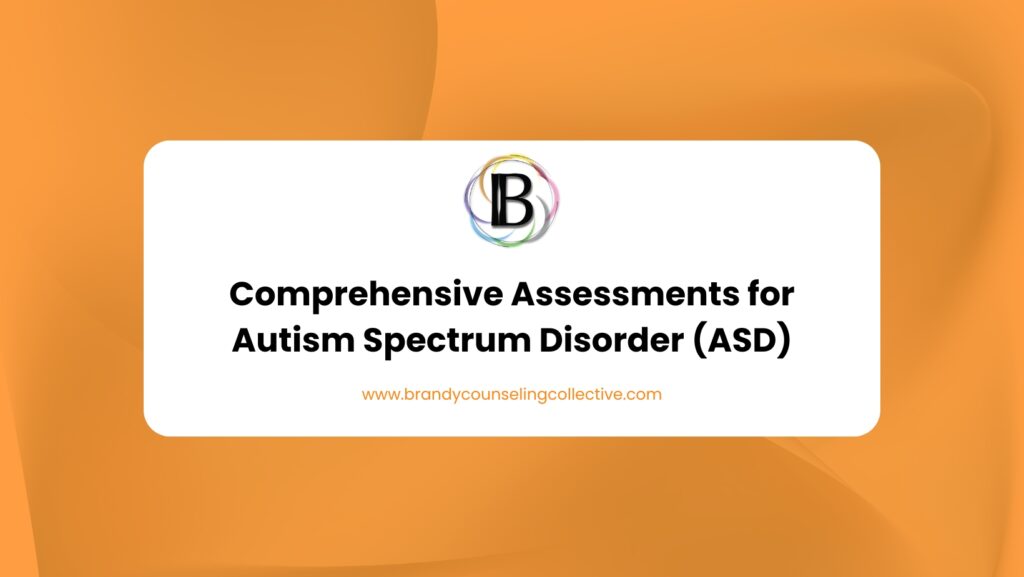Autism Spectrum Disorder (ASD) is a complex neurodevelopmental condition characterized by a wide range of symptoms and severity. Early and accurate diagnosis is crucial for ensuring individuals receive the support and interventions they need to thrive. Comprehensive assessments for ASD are essential in identifying the unique needs of each individual and developing tailored intervention plans. This blog explores the components, process, and importance of comprehensive autism assessments for ASD.
Understanding Autism Spectrum Disorder (ASD)
ASD affects how individuals perceive, communicate, and interact with the world. It is characterized by challenges in social interaction, communication, and repetitive behaviors or restricted interests. Symptoms can vary widely among individuals, making ASD a “spectrum” disorder. Early signs of ASD may appear in infancy, but symptoms often become more noticeable during early childhood.
Importance of Early Diagnosis
Early diagnosis of ASD can lead to earlier intervention, which is associated with better outcomes. Interventions can help improve communication skills, social interactions, and adaptive behaviors, making it easier for individuals with ASD to integrate into various social settings and achieve their full potential. Early ASD assessments are therefore critical in providing timely support.
Components of a Comprehensive ASD Assessment
A comprehensive assessment for ASD involves multiple steps and tools to gather detailed information about the individual’s behavior, development, and functioning. Here are the key components of a thorough ASD assessment:
1. Developmental Screening
Developmental screening is typically the first step in the ASD assessment process. Pediatricians or primary care providers use standardized screening tools, such as the Modified Checklist for Autism in Toddlers (M-CHAT), to identify children who may be at risk for developmental delays or ASD. These screenings often occur during regular well-child visits at 18 and 24 months of age.
2. Detailed Developmental History
Gathering a detailed developmental history involves interviewing parents or caregivers about the child’s early development, medical history, and behavioral patterns. This history provides context and helps identify any early signs or risk factors associated with ASD, including family history and environmental factors.
3. Behavioral Observations
Behavioral observations are conducted in various settings, such as at home, school, or during clinical visits. Observing the child’s behavior across different environments helps professionals understand how ASD symptoms manifest in different contexts. Key behaviors to observe include eye contact, use of facial expressions, and responses to social interactions.
4. Standardized Assessment Tools
Several standardized tools are used to diagnose autism. These tools are designed to assess communication skills, social interactions, and behavioral patterns. Commonly used assessment tools include:
- Autism Diagnostic Observation Schedule (ADOS): ADOS is a semi-structured assessment that evaluates communication, social interaction, and play or imaginative use of materials.
- Autism Diagnostic Interview-Revised (ADI-R): ADI-R is a structured interview conducted with parents or caregivers to gather detailed information about the child’s developmental history and current behavior.
- Childhood Autism Rating Scale (CARS): CARS is a rating scale used to identify children with autism and distinguish them from children with other developmental disorders.
5. Cognitive and Developmental Assessments
Assessing cognitive and developmental functioning helps determine the individual’s strengths and challenges. These assessments can include IQ tests, adaptive behavior scales, and developmental milestone evaluations. Understanding cognitive and developmental levels is crucial for creating appropriate intervention plans.
6. Speech and Language Assessments
Communication difficulties are a core feature of ASD. Speech and language assessments evaluate the individual’s ability to understand and use language. Speech therapists assess various aspects of communication, including expressive and receptive language skills, pragmatics (social use of language), and nonverbal communication.
7. Sensory and Motor Assessments
Many individuals with ASD have sensory processing issues or motor coordination challenges. Sensory and motor assessments identify any difficulties with processing sensory information (e.g., sensitivity to light, sound, or touch) and evaluate fine and gross motor skills.
8. Psychological and Behavioral Assessments
These assessments evaluate the individual’s emotional and behavioral functioning. Psychologists may use standardized questionnaires, behavior checklists, and clinical interviews to identify any co-occurring mental health conditions, such as anxiety, depression, or attention-deficit/hyperactivity disorder (ADHD).
The ASD Assessment Process
A comprehensive ASD assessment involves a multidisciplinary team of professionals, including pediatricians, psychologists, speech therapists, occupational therapists, and special educators. The assessment process typically follows these steps:
Step 1: Initial Consultation
The assessment process begins with an initial consultation with a healthcare provider or specialist. During this meeting, parents or caregivers share their concerns and observations about the child’s behavior and development.
Step 2: Developmental Screening
If initial concerns are identified, the healthcare provider conducts a developmental screening using standardized tools. If the screening indicates potential developmental issues, a referral for a comprehensive assessment is made.
Step 3: Multidisciplinary Evaluation
The multidisciplinary team conducts a series of assessments, including developmental history, behavioral observations, and standardized testing. Each team member evaluates the child in their area of expertise, contributing to a holistic understanding of the child’s strengths and challenges.
Step 4: Feedback and Diagnosis
After completing the assessments, the team meets to discuss their findings and make a diagnosis. They then provide feedback to the parents or caregivers, explaining the results and the implications for the child’s development and functioning. The diagnosis is made using criteria from the Diagnostic and Statistical Manual of Mental Disorders (DSM-5), published by the American Psychiatric Association.
Step 5: Developing an Intervention Plan
Based on the assessment results, the team develops an individualized intervention plan tailored to the child’s needs. This plan may include recommendations for therapies, educational supports, and other interventions to address the child’s specific challenges.
Importance of Comprehensive Assessments
Comprehensive assessments for ASD are vital for several reasons:
Accurate Diagnosis
Accurate diagnosis is essential for accessing appropriate services and supports. A thorough assessment ensures that the diagnosis is based on a comprehensive understanding of the individual’s behavior and development. Diagnosing autism accurately can lead to better-targeted interventions.
Tailored Interventions
Every individual with ASD is unique, with their own strengths and challenges. Comprehensive assessments provide detailed information that helps create tailored intervention plans, maximizing the effectiveness of therapies and supports. The benefits of ASD assessments are most evident in the personalized care plans they inform.
Early Intervention
Early intervention can significantly improve outcomes for individuals with ASD. Identifying ASD early through comprehensive assessments allows for timely intervention, which can enhance communication skills, social interactions, and adaptive behaviors.
Identifying Co-occurring Conditions
Many individuals with ASD have co-occurring conditions, such as ADHD, anxiety, or sensory processing disorders. Comprehensive assessments help identify these conditions, ensuring that all aspects of the individual’s needs are addressed.
Guiding Educational and Therapeutic Support
Assessment results guide the development of individualized education programs (IEPs) and therapeutic goals. This ensures that educational and therapeutic supports are aligned with the individual’s specific needs and abilities. Developmental pediatricians often play a crucial role in this aspect of care.
Comprehensive assessments for Autism Spectrum Disorder (ASD) are crucial for unlocking the potential of individuals with autism. By providing a detailed understanding of each individual’s unique strengths and challenges, these assessments enable the development of tailored intervention plans that can significantly improve outcomes. Early and accurate diagnosis, combined with appropriate supports and interventions, can help individuals with ASD lead fulfilling and meaningful lives.
If you have concerns about a child’s development, seeking a comprehensive assessment is a critical first step towards accessing the support and resources they need to thrive. Support groups and resources are also invaluable in providing ongoing assistance and community for families navigating an ASD diagnosis.
Unlock Your Child’s Potential with Brandy Counseling Collective
Is your child showing signs of Autism Spectrum Disorder (ASD)? Early and comprehensive assessments are crucial for providing the support they need to thrive. At Brandy Counseling Collective, we offer detailed and compassionate ASD assessments to identify your child’s unique strengths and challenges. Our multidisciplinary team is dedicated to creating tailored intervention plans that enhance communication, social interactions, and overall development.
Take the first step towards unlocking your child’s full potential. Contact Brandy Counseling Collective today to schedule a comprehensive ASD assessment.


